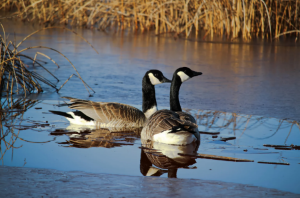This winter is expected to present a high risk of Highly Pathogenic Avian Influenza (HPAI) in the UK. Water birds such as ducks, geese, swans and gulls are among the groups most commonly affected. Because many Cemex sites include waterbodies, there’s an increased likelihood that dead or sick wild birds could be found on site.
Signs of bird flu on a site is an increase in the number of dead birds. Symptoms in live birds can include:
- Swollen head
- Closed, runny eyes
- Unresponsiveness
- Lack of coordination, loss of balance and tremors
- Drooping wings
- Dragging legs
- Twisting of the head and neck
Key Risks
Avian influenza is primarily a disease of birds, but the virus can spread rapidly between wild populations and, in rare cases, may pose risks to people handling infected birds. For this reason, it’s essential that no site staff, contractors or visitors handle dead or sick birds under any circumstances.
Your Responsibilities
All Site Managers and site teams have a duty to help prevent disease spread and support national monitoring efforts. If you find any dead wild birds on or near your site:
- Do not touch or move the birds. Avoid direct contact with feathers, droppings, or surfaces contaminated by birds.
- Report the finding immediately. Use the government’s online reporting tool:
Report dead wild birds – GOV.UK. This helps Defra monitor species affected and track the spread of the disease.
- Notify your Line Manager so the information can be logged and any additional site precautions assessed.
Further Information
Up-to-date information about affected species and locations can be found at:
Bird flu (avian influenza): cases in wild birds – GOV.UK
Remember – Do not touch but do report.
Helping monitor avian influenza protects wildlife, people, and our operations.
